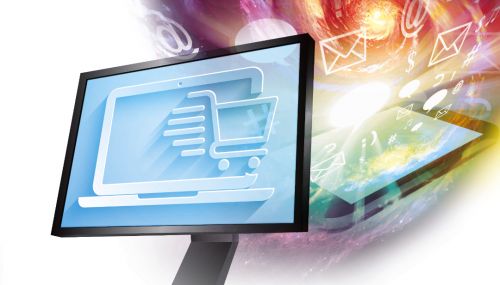A steady flow of new customers is essential for success, but it’s the current customers who really drive the fortunes of many energy marketing companies. Long-term accounts form a core that stabilizes the business, makes profitability possible, and serves as a ready-made market for new products and services.
Changes in the heating fuels sector over the last few years have caused customer losses to soar, with homeowners abandoning full-service heating oil suppliers to sign on with discounters and natural gas utilities. Those losses are a strong indicator of the risks that threaten companies that do not differentiate themselves from the commodities they resell. When a company self-identifies as a fuel provider without clearly establishing their added value, they can appear imminently replaceable to the customer.
To make matters even more challenging, the value that many energy marketers add through service work is esoteric and difficult to appreciate. Consumers are more inclined to take home comfort equipment for granted than to consider how a tune-up – or even a system upgrade – might benefit them. This means that many homeowners, by default, may consider your company non-essential.
You Can Change Perceptions
This is nothing to be discouraged about. Supermarkets, gas stations, and utilities all resell commodities, and many of them have found ways to promote loyalty and become stickier. You can do the same. It’s all in what your customers believe about the company – and you have the ability to change their perceptions.
Improving customer retention is not as exciting as pursuing new business or diversifying the company, and the results are also less tangible. Instead of creating measurable results, such as the addition of new customers, you are trying to avoid a negative, i.e. a high loss rate. Success is defined, more or less, as customers staying put and doing nothing new, and there is no threshold moment to signal your success.
To retain customers effectively, you need to do a lot of little things well and continue doing them again and again over time with the goal of improving the customer’s perceptions. Here are seven initiatives you can take to help customers appreciate what you do for them, including action steps you can take immediately.
Make a customer retention plan. First, evaluate the status quo. What is your customer loss rate? Why do customers leave you? Try to develop a clear sense of what is happening, so you don’t invest a lot of effort in solving the wrong problems. During planning, be sure calculate both the value of an existing account and the cost of replacing that revenue.
Your planning will yield the best results if you involve your team. Remind the staff how important retention is to the company’s success, and learn what they know about customer defections. By involving them early on, you will gain a better understanding of current conditions, and you’ll get employees more engaged in the company’s success going forward.
Complete the plan by setting a new target rate for customer losses. That way, the whole team knows what they’re trying to accomplish.
Create great experiences. Personal experiences leave lasting impressions. When a customer has one or more great experiences with your team, they are much more likely to perceive the company as irreplaceable. Don’t leave the customer experience to chance; instead, make it a top priority, and begin engineering great experiences.
Some of the most memorable experiences over which you have control are the conversations that occur between the customers and members of your team. As much as we all love operational efficiency, it is important to accept and even encourage “inefficiencies” where customer conversations are concerned. Employees who have customer contact should learn to switch in and out of efficiency mode. They should be efficient in providing answers and responding to requests and then exhibit the patience of Job when the customer is talking or asking questions.
Other occasions that can turn into great experiences include sales calls, service calls, emergency service calls and installation jobs. Set guidelines for your employees about how to create a great experience in each of those settings. Often, that means providing the customer with helpful information. For example, you could create a brief flyer that describes the tune-up process in terms of energy conservation and equipment lifespan and use it as a leave-behind at the annual service call.
Just as great experiences improve the relationship, bad experiences can damage it. Study problems such as fuel run-outs and service callbacks and find ways to minimize or eliminate them, such as using remote monitors on fuel tanks and improving your technician training.
When customer problems do occur, mitigate the damage. A personal call from the owner can turn a bad experience into a good one. You can also use a rewards program to provide compensation, such as a coupon for free fuel.
Reward loyalty. Use an online loyalty rewards program such as PriMedia’s OnPoint to reward customers for doing business with you. Upon launching the program, make generous initial awards of points to current customers and tell them about it in a personalized letter. You can also award bonus points on customer anniversaries and other special occasions.
Make customers part of something. Until the last few years, there was very little public attention paid to how people heated their homes. A home used oil, propane or natural gas, and the choice was no big deal. These days, however, a new energy mythology is emerging, and many consumers have strong feelings about fossil fuels and “alternative energy.”
In the mythology, petroleum equates with climate change and Middle East conflict, and the United States is transitioning to energy sources with lower carbon emissions. It’s an unrealistic paradigm for the near future at least, but it is widely held, particularly in the Northeast. And since the customer continues to be “always right,” marketers need to understand the paradigm and work with it.
To hold on to customers who subscribe to the mythology, marketers need to be part of the solution themselves. You can position the company as an advocate for conservation and, if practical, a purveyor of solar and geothermal systems. By proactively providing customers with unbiased advice about saving energy and incorporating alternative energy, you can demonstrate value beyond that of any commodity you sell.
Another smart place to hang your hat is with home automation and remote control. The recent purchase of Nest Labs by Google accelerates the use of advanced electronics that offer feedback on energy consumption and remote control of home systems via the Internet. Energy marketers who ride the cutting edge of this movement will find it much easier to modernize the company image and connect with young homeowners.
Of course, it takes lots of direct outreach to customers to recast the corporate image. More about that in a moment.
Dazzle them with credibility. There is a lot of conflicting information in the public domain about fuels and energy sources, and consumers appreciate some expert perspective that can help them make smart choices. Seize the opportunity and position the company as a credible energy expert.
Customers might expect biased advocacy for the fuel you sell, and you can surprise them by providing a steady stream of objective information about conservation and energy-related matters. Share relevant news with them about fuel specifications and prices, fuel supply and shortages, energy conservation strategies, and more. Express shared values, and help them see you as their kind of company.
Not only will your company become more valuable in your customers’ eyes, you will also gain enough credibility that you will be able to advocate for the fuels you sell without jeopardizing your relationships. As I discussed in last month’s column (Help Customers Make the Right Fuel Choice, available on OilandEnergyOnline.com), natural gas is receiving a lot of unfavorable press, and you can pass the news on to your base to plant seeds of doubt about natural gas, particularly on price and the environment.
The truth is that most homes will continue to use one fossil fuel or another for many years, and many consumers understand that fact, even as they criticize oil and gas. Use your platform as the expert to promulgate the notion that making highly efficient use of heating oil or propane is an acceptable form of “getting off oil.”
Be convenient. The best service companies go out of their way to provide customer conveniences. Take steps now to improve customer convenience, such as extending office hours, offering online account access and paperless billing, and enabling online enrollment for service plans, budget plans and price protection.
Repeat, repeat, repeat. To change customer perceptions, an energy marketer needs to communicate regularly. Develop an outreach strategy that creates multiple points of contact and does not rely exclusively on social media, because Facebook and Twitter lack the reach and gravitas needed for a customer retention campaign.
The most reliable way to communicate to the entire base is by mail (and e-mail for customers who opt out of mailed communications.) Develop a plan that includes a combination of newsletters and/or customer letters in which you communicate about home comfort, energy, conservation, and your products and services. Get started now, and establish a regular schedule.
The hard work in customer outreach is writing the articles or making the videos, but once you have created something once, repurposing it is relatively easy. For example, you can create one good primer article on how to reduce heating costs and then use it, with minor modifications, in a newsletter, in a blog and in social media posts.
Make sure the communications pieces you send reflect very well on the company, with strong topical focus, clear writing and attractive graphics, so that customers make positive inferences about you. Given the value of those existing accounts over time, a strong investment in communications is justified.
As always, PriMedia stands ready to help with all your communications needs. To get started, please call me at 800-796-3342 or e-mail me at rrutigliano@primediany.com





